COPYRIGHT, PLEASE NOTE
Sunday, February 16, 2025
New Tool, a Powerful Dell Precision 7875 Workstation
Workstation computers from Dell are really well-built and come with excellent next-business-day onsite service. I have been using them for a couple of decades for my work. My previous workstation served me well for almost nine years—these kinds of computers do not age as fast as normal consumer PCs.
My old Dell workstation has two ten-core Xeon processors, 128GB of memory, and a decent graphics card. Since I work with 4K and 8K videos, 3D graphics, and run AI locally, my old workstation has become far too slow. It goes to my observatory computer, little overkill for telescope and camera control but works well there.
The new Dell Precision 7875 Workstation features a 96-core AMD Threadripper Pro processor (3.2 – 5.1 GHz), 512GB of RAM, and a 20GB NVIDIA RTX 4000 Ada graphics card. It comes with a standard three-year next-business-day onsite service in case anything goes wrong.
My new display is also from Dell—a 40-inch 21:9 curved Thunderbolt hub monitor with a stunning 5K resolution and a 120Hz refresh rate. The curve in the monitor is perfect for correcting perspective distortion, ensuring that straight lines remain visually straight.
I also use an Ergotron monitor arm, so no desk space is wasted, allowing me to position the large display at the optimal distance and orientation with ease
Saturday, September 28, 2024
NEW SETUP FOR MY ASTRONOMICAL NATURE IMAGING WORK
I haven't publish much new images in past two three years since I have had some health problems. Now I'm good as new and can start working again. Past two years I have been slowly building a new imaging platform. I have done some shorter focal length work past six years, now it's time to go closer again.
OPTICS
System is build around Celestron EDGE 14" telescope, I selected this scope due to its light gathering capacity, 356mm diameter and 3910mm native focal length (This very large and heavy 0.7 Reducer is especially made for the EDGE 14") One main difference to normal Celestron EDGE telescope is that I have added a secondary mirror focuser (by Optec) to get rid of a mirror flop. It can be a problem, especially with a heavy mirror. Bottom line, this scope has an excellent optical quality. There is some optical analysis and a single full scale 20min frame at end of this post.
In future I can add a "HyperStar system" to replace secondary mirror and use this telescope as a fast f2 astrograph.
The focuser is made all aluminium, it's really robust and easy to collimate.
I ended up to a MESU Mount MARK II since it has 100kg capacity at imaging work with a periodic error less than 4 arcseconds peak-to-peak, impressive numbers indeed. It also has zero lash back due to its friction drive system. One of the nice features is the 80mm diameter channel for all of the cords, trough the Ra and Dec axes, no more dragging cords!
The pillar I ordered with the mount is bended knee pillar type, no meridian flip is needed and telescope can track whole sky without stopping. The pillar came in easy to handle parts and assembly was very straight forward, the assembled pillar is very rigid under the weight of heavy telescope, counter weights and accessories.
Mesu mount is absolute beautiful engineering work. Support from manufacture is also very good. I had some minor problems with settings at first but they get solved in no time after we went it trough with remote connection, while on site. Bottom line, money wise this mount is a real bargain, if compared its features to any other brand or model of mount.
I have had really good experiences doing long focal length imaging with AO unit during the years. It doesn't correct the actual seeing so much but it corrects every small or big error from heat bubbles and vibrations from heavy traffic, wind, etc. and it does that really really fast.
THE FIRST LIGHT IMAGE
https://astroanarchy.blogspot.com/2024/10/first-light-for-my-new-imaging-setup.html
A single full scale 20 min O-III exposure used for the optical analysis
This is one of the test shots after the collimation procedure. Exposure time is 1200s with 3nm O-III filter. Image is calibrated with Dark Frame and Bias corrected Flat Frame. Target is WR 134 in Cygnus. Stars are pinpoint from corner to corner. There is no stretching done, Click for a full scale image.Monday, January 13, 2020
The Frankenstein monster, my current imaging setup
First time at this Winter season 2019-20 I have a clear sky and somehow functional imaging system.
I managed to mate Apogee Alta U16 + filter wheel with my old second hand Tokina AT-x 300mm f2.8 camera lens.
Lots of self made mechanical tweaks was needed to make this work out.. (I used even an angle grinder to cut off ”unnecessary” parts of the lens to have correct back focus distance)
The result looks more like a Frankenstein monster. It’s alive!!!
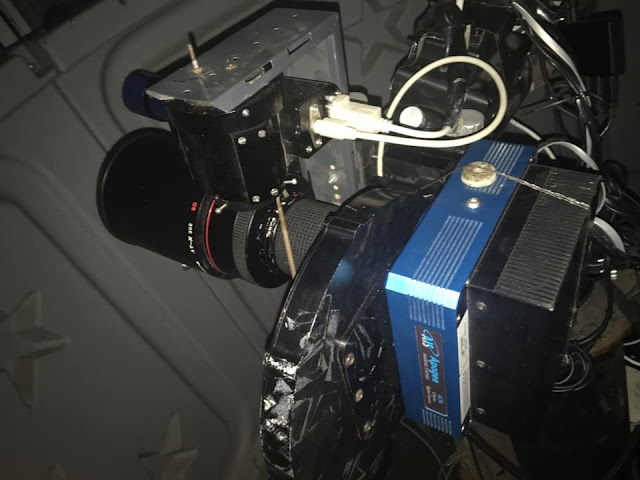
Apogee Alta U16 with a filter wheel and Tokina AT-x f2.8 camera lens n th 10-micron 1000 mount.
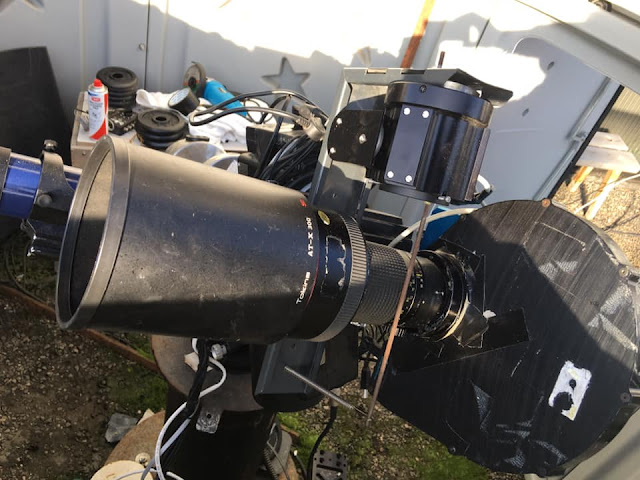
The focusing system is build around the TCF-s focuser. Focusing is done by a spring loaded round metal file over the focusing ring. This is a very accurate autofocusing system and it's temperature compensating too.
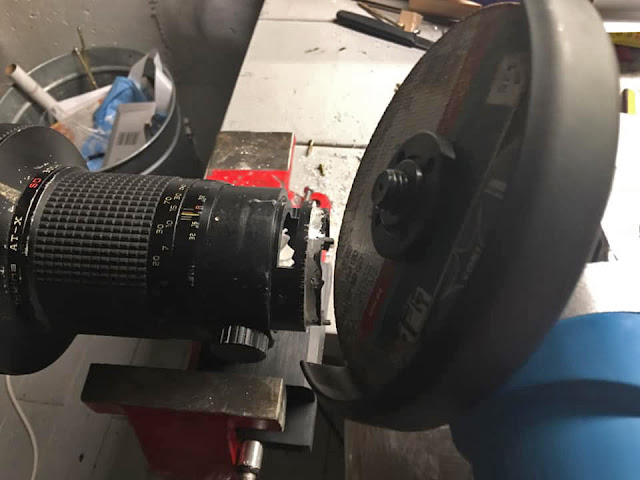
Shortening the lens, bajonet and aperture control ring are removed and I'm just about to cutting off the filter holder area. The current imaging system is kind of crazy combination. Actually it shouldn't work at all but with a angle grinder and self made adapter I was able to mate Tokina AT-x 300mm f2.8 optics to Apogee Alta U16 camera and filter wheel. There is also a temp compensating focusing system made from TCF-s focuser, L-shape metal from an old table, round metal file and a spring from an old desk lamp. The CCD is very large, over 36 x 36 mm but for some reason the lens can lit the whole area with a very little coma at most outer corners.
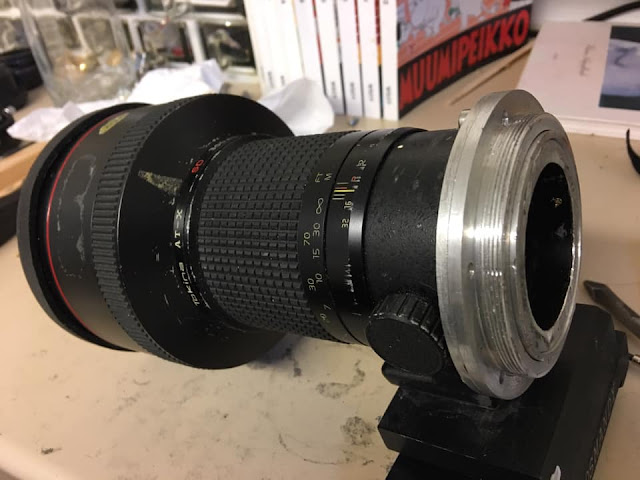
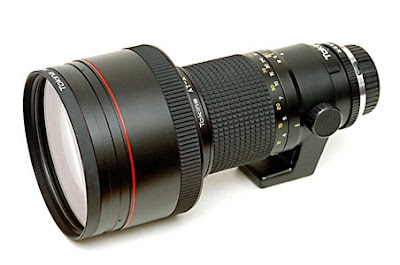
Image of the full uncropped frame
(reduced 50% due to large size)
Monday, August 15, 2016
New imaging season about to start
Images in four posters are shot with different instruments.
Images shot with Canon EF 200mm f1.8 camera lens.
QHY9 astrocamera and the Baader narrowband filters
Info and image details for each photo can be found from HERE
Images shot with Tokina AT-X 300mm f2.8 camera lens.
QHY9 astrocamera and the Baader narrowband filters
Images shot with Meade LX200 GPS 12" @ ~f6 telescope.
QHY9 astrocamera and the Baader narrowband filters
Images shot with Celestron Edge HD 1100 telescope.
Apogee Alta U16 and Astrodon narrowband filters
Monday, October 6, 2014
A new imaging setup starts to build up.
I now have a new Active Optics unit from them, it supports full frame CCD cameras. With the AO-unit I'm using an OAG with the ultra sensitive guider, Lodestar X2. I used to have a smaller version of the AO-unit and Lodestar guider for many years. They really turn any poorly tracking mount to a extremely stable imaging platform. Best of all, the AO-unit works with any third party imaging camera, like the Apogee in my case.
- Mount, 10-micron 1000
- Optics, Celestron Edge HD 1100
- Camera, Apogee U16 D09 with KAF16803 chip, 4096x4096 9 microns pixels, 36,8x36,8mm
- Filter Wheel, Apogee, seven square slots 50x50mm
- Focuser, FeatherTouch with MicroTouch control unit
- Heater, Dew Buster
- Active Optics Unit, SXV AO LF from Starlight Xpress + OAG
- Guider, an ultra sensitive Lodestar X2, also from Starlight Xpress
- Focal Reducer, Celestron reducer 0.7 for Edge 1100 (Not yet arrived)
- Finder, Telrad
- Filters, Astrodon, H-alpha 5nm, O-III 3nm, S-II 3nm. R, G, B and L
- Polar alignment, The axis of the telescope must be exactly parallel to Earth axis
- Collimation, the optical axis must be perfectly concentric
- Fine tune any possible tilt in CCD to have it perfectly perpendicular to light path.
- FocusMax training, ~30 V-curves to have an accurate model of the optical behavior for auto focusing.
- Temperature compensation training, so that temp expansion of the optics can be compensated.
Friday, January 31, 2014
It's over, I cant do my loved astronomical imaging anymore
Sad news, my old Meade LX200 GPS 12" telescope gave up and died.
After a careful study of damages in my scope, I found out, that not only the Ra motor controller card was toasted. Also the motherboard, Ra motor and its encoder are burned and partly smelted too. This means, that the whole system is beyond repair, least with any reasonable costs.
Images, taken with this deceased scope can be seen HERE.
A collection of images with the Meade LX200 GPS 12" telescope, Baader narrowband filters and the QHY9 astronomical camera
(Be sure to click the image to see it in full scale)
Tuesday, April 23, 2013
An other collection of images, Meade LX200 GPS 12"
(Be sure to click the image to see it in full scale)
A labeled version
(What a mess...)
More images and info about instruments in HERE
I'm using two camera lenses, with the Meade, the Tokina AT-X 300mm f2.8 can be seen in the image above. Canon EF 200mm f1.8 is my second camera lens for the astrowork.
Image collections with both lenses can be seen in HERE.
Couple of my favorite images with Meade LX200 12" telescope
A two frame mosaic of IC 1805, the Melotte 15 area
More information in HERE
The Bubble Nebula in Cassiopeia
Sunday, April 21, 2013
A collection of images, Canon EF 200mm f1.8 optics
Images are shot between 2009-2012
Canon EF 200mm f1.8
Canon EF lens Modification for the astronomical use
Sunday, September 23, 2012
My equipment



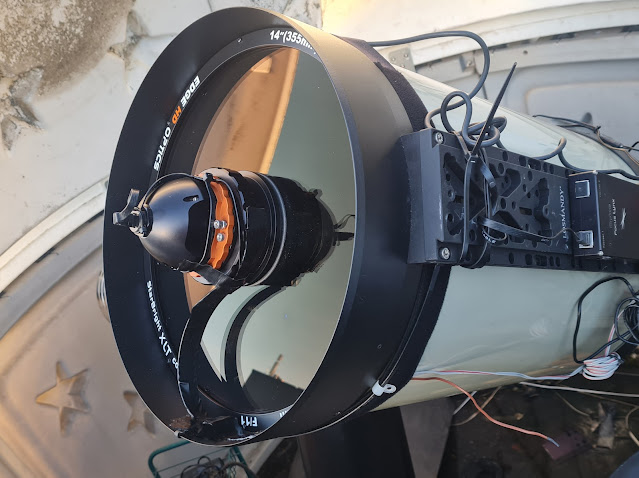
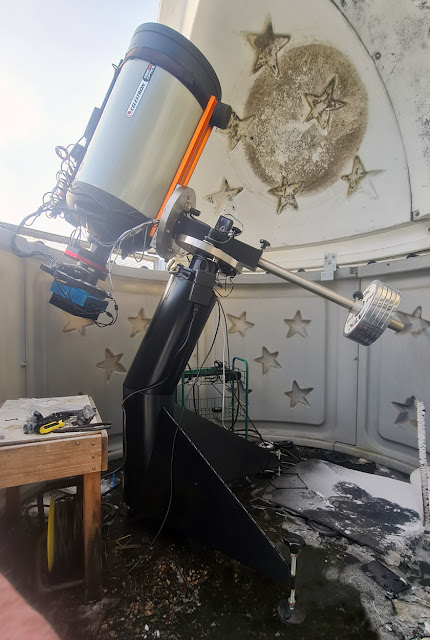
.jpg)

.jpg)
.jpg)



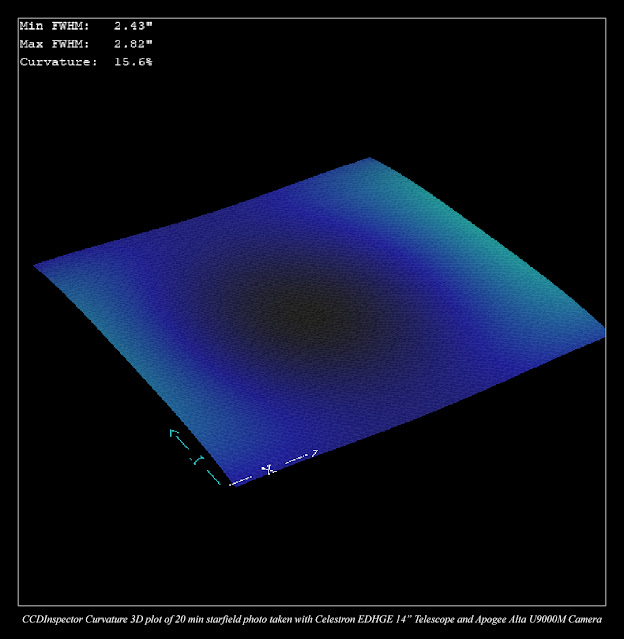









.png)



.jpg)



















